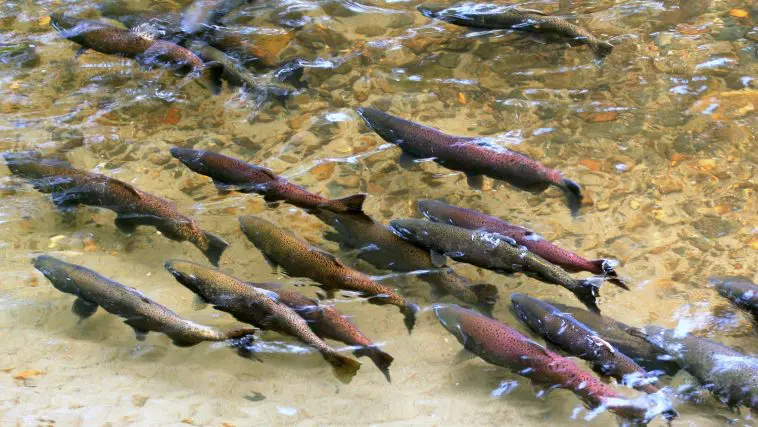[Originally published as Effective Population Size and Creation]
Geneticists use a metric called “effective population size” to measure the genetic variation in a population. Generally speaking, the higher the effective population size, the happier the geneticists are about the state of the population. However, there is a connection to creation science here that is often missed. Before we dig into the details, let’s have a look at what effective population size is and does.
A study of five populations of chinook salmon found that the effective population size, and thus the genetic variation, was decreasing. The decrease came while the census population size was increasing (Shrimpton and Heath, 2003). This loss of diversity, despite a large population size, also has been demonstrated in brown algae (Coyer et al, 2008). It has been empirically demonstrated that reducing effective population size increases the likelihood of extinction, at least in some plants (Newman and Pilson, 1997).
Since effective population size drops as genetic variety decreases, we can infer that both genetic variance and effective population size were higher in the past for a given species. Further, since lower genetic variance increases the risk of extinction, according to the Newman and Pilson paper, we can infer that a species tends to become more extinction prone over time. If those inferences are accurate, then the historical lifespan of a species is tied specifically to the amount of genetic diversity it has.
None of what is written above should surprise creationists.
Using the created heterozygosity model pioneered by Drs. Nathaniel Jeanson and Jason Lisle, it makes perfect sense that diversity should decrease over time and that diversity loss should cause a trend toward extinction. The data aligns brilliantly with the creation model.
Think for a moment about the Garden of Eden under a created heterozygosity model.
The original kinds would all have had a great deal of inbuilt allelic diversity. After the Fall, this would have slowly begun to decline. At the flood, all the kinds, including plants, insects, and water animals underwent a strict bottleneck. The ark-kinds bottleneck was stricter, but all organisms underwent some level of a bottleneck. The bottleneck would have reduced some of the diversity, but there would still have been a lot of available allelic diversity, even in the ark kinds.
After the flood, animals began to immediately spread out around the world, and reproduce as they went. As they did so, they spread out into a multiplicity of populations. In each population, genetic diversity would be much less than in the original kinds. This would have fixed genetic variants in some cases, but in others, there would have been a split along a varying percentage value line of differing alleles.
In these instances, diversity would have still declined over time as genes moved to fixation, either by selection or random drift. While the actual population size would have grown exponentially, effective population size would have dropped off a cliff as the kinds separated into populations. After the initial precipitous drop, the decline would have been slower once the original species formed.
Today, perhaps the most well-known species that is falling off the extinction cliff is the cheetah. Scientists know that cheetah viability is dropping, litter size is shrinking, and deformities are increasing. As Kelly (2001) pointed out, the effective population size in cheetahs is a mere fifteen percent of the actual population size, far below what is acceptable to maintain a species. The cheetah will go extinct, and nothing can be done to prevent it.
As we can see from effective population size, genetic diversity is tending to decline over time. Further, when diversity reaches a certain low threshold, the species will implode and funnel towards extinction. This cannot be prohibited by mutation. No evolutionary process can stop the degradation. It is inevitable. This being the case, it should be obvious the original genomes were created perfect in the beginning.
References:
Coyer JA, Hoarau G, Sjøtun K, Olsen JL. 2008. “Being abundant is not enough: a decrease in effective population size over eight generations in a Norwegian population of the seaweed, Fucus serratus.” Biol Lett. 4(6):755-757.
Kelly MJ. 2001. “Lineage Loss in Serengeti Cheetahs: Consequences of High Reproductive Variance and Heritability of Fitness on Effective Population Size.” Conser Bio. 15(1):137-147.
Newman D, Pilson D. 1997. “Increased probability of extinction due to decreased genetic population size: experimental populations of Clarkia pulchella.” Evolution (N Y). 51(2):354-362.
Shrimpton JM, Heath DD. 2003. “Census vs. effective population size in chinook salmon: large- and small-scale environmental perturbation effects.” Mol Ecol. 12(10):2571–2583.






